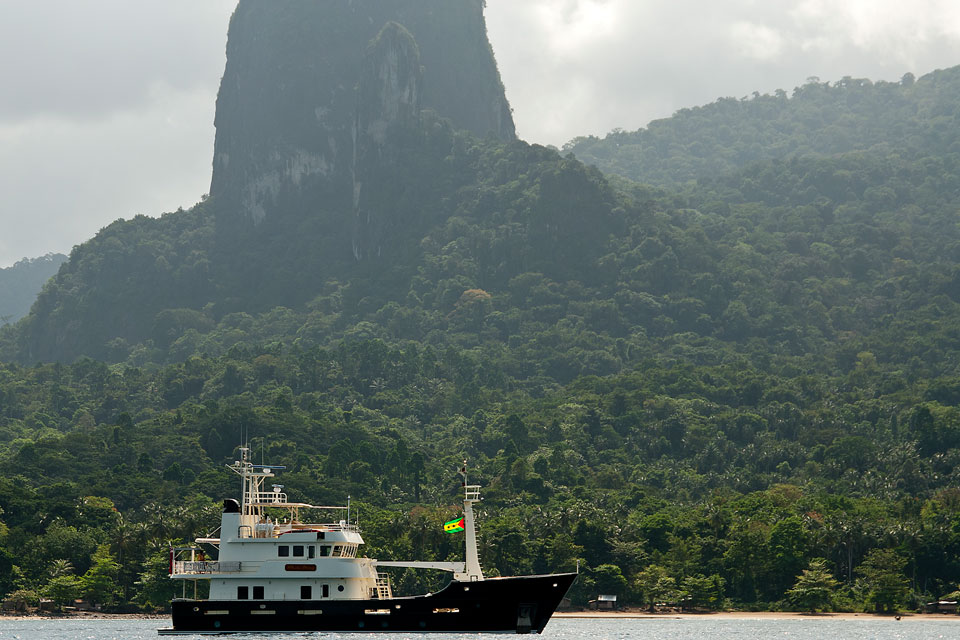
Whale Song IV
In our July issue, Tom Zydler recounted Part Three of his trip around the world aboard Whale Song, a 94-foot Trinity Halter expedition yacht. We left Zydler, who captained the vessel, first mate Nancy Zydler (his wife), owner Grant Wilson and cook Barbara Parks in Phuket, Thailand, undergoing a refit before their last big push around the globe.
Phuket to Maldives
Two and a half months after her haul-out in Phuket, Whale Song slid into the sea, firecrackers blasting and rainbow-hued prayer wraps fluttering around the bow. The paint on the hull gleamed, as did the engine room and the engines. Things looked auspicious for crossing the Indian Ocean.
In September, Grant Wilson returned and we spent some time exploring the islands near Phuket. One day the smell of burnt rubber wafted through the engine room. Minutes later our speed dropped. The starboard propeller wasn’t turning, though the engine was running. The silicone rubber coupling joining the engine to the gearbox had disintegrated after 6,000 hours. While we limped on one engine to Ao Chalong anchorage on Phuket, Wilson e-mailed a parts distributor in Singapore and ordered a new coupling for each gear box. Our good Thai mechanics worked through the weekend, and by Wednesday Whale Song was on her way to the Andaman Islands.
Slab-sided trading vessels from Tuticorin, India, lined the Port Blair wharves on South Andaman Island. Large naval vessels lay at anchor in this important Indian naval base. Visiting yachts are tolerated but not warmly welcomed. An enforced ban on logging made the islands look splendidly green. Fish flitted over coral reefs fed by the confluence of the Indian Ocean and Myanmar’s rivers.
Now, in September, the southwest monsoon had arrived with strong winds that pushed an impressive swell into Duncan Passage, where we turned westward into the Indian Ocean toward Sri Lanka.
After banging into mad chop all the way from the Andamans, we expected some rest in Galle in southern Sri Lanka. The Sri Lankan navy opened the anti-frogmen barrier to let us into a basin protected by a breakwater. Not finding any explosives attached to our bottom, navy divers removed a bunch of netting from one of our propellers, smiled and refused a tip.
Thousands of years ago Galle prospered as a trading post, and the town has many faces. A grand, immaculately white Buddhist temple overlooks the bay; gaudy paintings of men and beasts adorn the walls of a Hindu temple; our crew joined an end-of-Ramadan feast with a family descended from 15th-century Arab traders. The surge in Galle basin gnawed through our mooring lines. After days of keeping 24-hour watch just to renew the chafing gear, we were relieved to cast off for the Maldives.
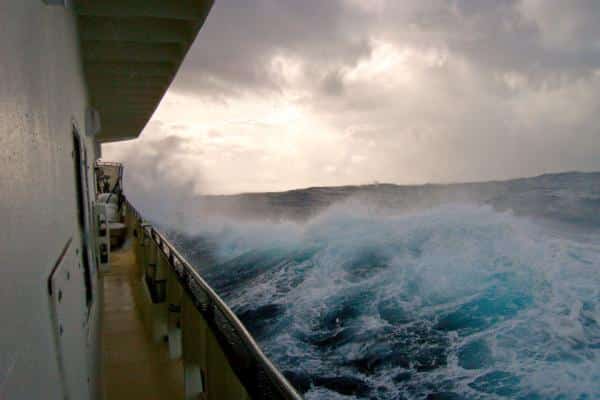
If sea levels rise as forecast, the Maldives will vanish in the next 100 years, except for the high-rise buildings in Malé, the capital, which is built on a coral outcrop. There is so little land that even major international resorts stand over water on stilts. Wilson engaged a divemaster who had grown up on Miladummadu Atoll, at the north end of the 600-mile-long chain of Maldives atolls, to point out the best scuba sites. Not fond of crowded Malé, he took us to Maahlos, a village in Ari Atoll. In the harbor, lateen-rigged boats bobbed alongside open cargo vessels. Villagers strolled the streets rimmed by walls made of coral blocks. Muslim women with covered hair, Hindu couples and children enjoyed the cooler air brought by the setting sun. Two sisters, one in fifth grade, the other in seventh, showed me the sights. They spoke perfect English and shared their stash of muraki fruit. When the crew dived at Fish Head Reef off Ari Atoll, a giant Napoleon wrasse joined us, apparently to have its stomach scratched.
Maldives to Capetown
The Indian Ocean turned on us the morning we pointed the bow toward the Seychelles. Despite moderate wind, a distant low-pressure disturbance created vicious cross seas 12 to 16 feet high. Bucking the contrary current, Whale Song reared and plunged onward at 6 knots. Three days later, puffy good-weather clouds floated over Mahé Island and Victoria, the port capital of the Seychelles. Due to the British and French colonial past, European influence here is still palpable. The residents speak both French and English, useful for the booming charter business on crewed and bare boats. The islands rise in peaks in this world of rock and boulder — even underwater granite monoliths resemble cathedrals, with schools of fish meandering through them like guided tourist groups. Birds rule the skies: tropicbirds, noddies, fairy terns, shearwaters. On Ile Aride nesting birds raised such racket that I swear I could hear them under water. The nature preserve on Ile Curieuse maintains a population of Aldabra Reef tortoises as large as the famous reptiles of the Galápagos. The tortoises enjoy the shade under palms that bear coco de mer, nuts shaped like female buttocks. The largest coco de mer can weigh 80 pounds. Until the European discovery of the Seychelles in the late 18th century, the rare nuts, lacquered and bejeweled, resided in private galleries.
The Indian Ocean shrank as we drew a bead on Madagascar. Mayotte Island, the French possession in the Comoros, has airline connections to Europe and, despite Comoro women wrapped in flowing colors, bore the air of a worn-out colony. Madagascar, on the other hand, looked irresistible even before we landed. Pink streaks slashed the dawn sky, and beneath, on lazy swells, a fleet of crescent sails loomed white against distant blue hills. All along the thousand miles of the western shore of this fourth largest island on Earth, hundreds of the local sailing vessels carried cargo and passengers. The variety of craft reflected the island’s tangled history. Outriggers came with the first settlers from as far as Borneo; Arab traders brought the lateen sail rig by way of East Africa; and gaff-rigged schooners arrived with the French colonists.
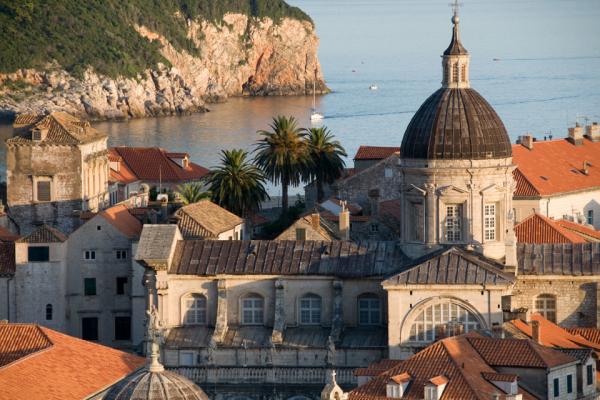
As Tulear, southernmost port in Madagascar, slid into the haze astern, steep beam seas ran from the southeast into the Mozambique Channel. Six hundred miles later the Agulhas Current flowing down the African coast gripped Whale Song and pushed her south at 11.5 knots against head seas. A welcome diversion, dozens of dolphins burst from the crests of rising swells and headed east, and above them raced squadrons of terns. Near shore just before Cape Town, the wind died, the sea flattened. Only whales, blowing and breaching, disturbed the calm, glassy surface that melted into pale sky.
The city of Cape Town felt more like Europe. Yet within a short drive we saw the worst of South Africa (the cardboard townships) and the best (Table Mountain National Park). Two ostriches crossed the road, looking down on the stopped cars. A male baboon charged into our car, yanked out my camera bag and ran — lenses, flashes, memory cards spilling down the road. Finding no food, he abandoned the bag on the edge of a cliff. There, at 34 degrees south, Africa is cool, and a colony of penguins thrives on this coast washed by the Southern Ocean. This cold current sweeps up the western shore of Africa, causing a persistent haze to hide Namibia’s high dune shores fronted by shoals. Called the Skeleton Coast, it produced many shipwrecks in the pre-GPS age. Even today only diamond mining ships come near it.
Namibia to the Canaries
Namibia is a very safe African country, but in Cape Town old cruising hands did not recommend cruising the West African coast. We soon found out they had a point. A small green peaked island loomed on the port bow as Whale Song powered northward. Annobón belongs to Equatorial Guinea and was described in our reference books as a tiny fishing village nesting under a forested extinct caldera topped by a lake, so the military visit was a surprise and soon turned into an episode of drawn machine guns and extortion. Wilson and Parks ended up ashore confined in the only hotel, while the yacht and her crewmen swung at anchor and armed guards aboard pocketed any loose stuff. Nancy and I were sent on a four-hour flight to Malabo, the capital of Equatorial Guinea, for interrogation by the Ministry of the Interior. Oliver Moss, attaché in the U.S. Embassy at the time, helped to free us.
Cutting straight through the Gulf of Guinea brought Whale Song to Tema in Ghana. Fishing dugouts, some 60 feet long, passed under sail by Tema’s new harbor, which was filled with modern ships. In Gambia, we found a slice of a less changed Africa. Hippos, protected now, wallowed in the muddy waters of the Gambia River. In Kudang, village people mixed crushed baobab fruit with peanut water to alleviate malarial fevers. The juice from incisions in palms bubbled into wine. Water buffalo grazed on rice stubble. In a school hut, boys diligently copied the Koran while their sisters took care of the infants.
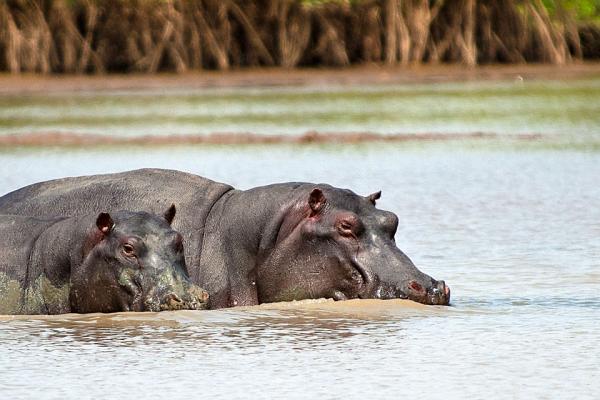
Through all of February and March, as we motored up the west coast of Africa, offshore harmattan winds from the Sahara sent powdery air over the sea. The dust played havoc with our air compressor-powered engine controls. We shed no tears after leaving dirty Senegal’s Dakar and its port captain, who showed up aboard, demanding free meals and gifts. After the messy West African countries, the Canary Islands promised Europe. Sure enough, the European vacation business had usurped every island coast flat enough to support hotels. A run inland always uncovers revelations: snow swirling through lava sculptures on Pico del Teide, some 12,000 feet high; ancient villages scattered like gems in the desert interior of Fuerteventura; a genuine Spanish plaza alive with evening strollers on La Palma.
The Mediterranean
Great numbers of sunshine-starved Brits pour into Gibraltar. As a result, apartment buildings rise on landfills in the old port. The good omen — monkeys still thrive on the Rock’s high mountain. Climb there on windy days for a full view of spinning williwaws wrapping sheets of spray over ships anchored far below. From Gibraltar and through the Pillars of Hercules, Whale Song powered east into a Mediterranean past. Medieval walled cities — Sardinia’s mountain-crest bastion of Castelsardo, or Corsica’s soaring Bonifacio citadel, the small, Genoese castle in Girolata and the battlements of Calvi — were built against widespread pillage. Croatia’s Dubrovnik in the Adriatic may be the grandest coastal walled city. It once competed for control of Mediterranean trade with Venice. In about eight hours, Whale Song crossed from Rovinj, Croatia, to the moorings Venice reserves for large yachts right by Piazza San Marco and the richest of Europe’s architecture.
From the Tyrrhenian Sea, through the Ionian and into the Aegean, Whale Song crossed tracks of antiquity: Capri once hosted Roman emperors; from the marina in Castellamare di Stabia in the Gulf of Naples we could see Pompeii; passing through the marina centers in Preveza, Greece, we sailed over Mark Anthony’s and Cleopatra’s fleet sunk by Octavian’s forces. Mykonos, these days throbbing with cosmopolitan partygoers, had been just a farm island to feed Delos, a much smaller arid island only a mile away and once considered the center of the Earth. Delos’ temples, sporting gigantic phallic sculptures, stood long before the Odyssey was written. Greek myth called it the birthplace of Apollo.
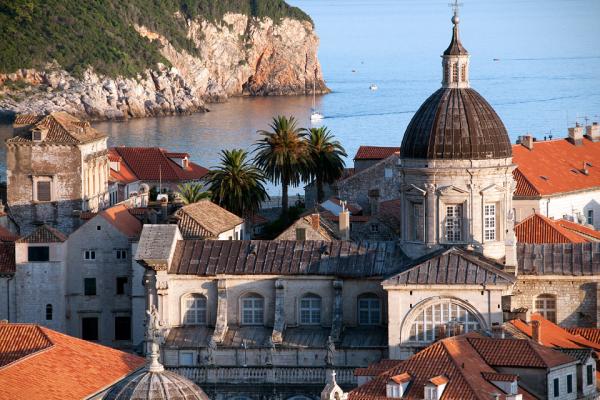
As autumn winds blew away summer cobwebs, Whale Song headed to Malta for a major refit, our last. An Australian couple keen to purchase the yacht arrived in Malta to attend the sea trial right after Whale Song slid back down the ways. Wilson kept the yacht for one more summer cruise to Egypt and the Red Sea and a foray into the Black Sea. But in early 2011, with the new owners aboard, Whale Song, now employed in whale research, crossed the Indian Ocean to Fremantle, Australia, and we bid goodbye to our faithful round-the-world ride.









